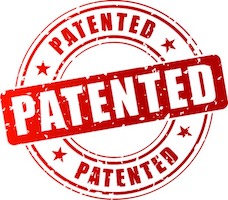“Arctic Cat Inc. v. Bombardier should be a cautionary tale for in-house IP attorneys that have implemented high quality internal patent marking programs but fail to monitor licensees’ patent marking programs.”
 As an in-house IP attorney, you may take comfort in knowing that your patent marking program is thorough, well-established, and properly executed. You have standardized procedures to determine which patents cover which products. You monitor product release dates to ensure appropriate marking. You have set up a “virtual marking” website to take advantage of this form of marking established by the America Invents Act (AIA). You regularly update the virtual marking website to remove expired patents and add newly granted patents. Your patent marking program is a well-oiled machine. But what about your licensees’ patent marking programs? Do you know anything about your licensees’ patent marking programs? Do you even care about your licensees’ patent marking programs? Well, you should, and the Federal Circuit recently provided another opinion to remind patent licensors that a licensee’s failure to mark can be costly.
As an in-house IP attorney, you may take comfort in knowing that your patent marking program is thorough, well-established, and properly executed. You have standardized procedures to determine which patents cover which products. You monitor product release dates to ensure appropriate marking. You have set up a “virtual marking” website to take advantage of this form of marking established by the America Invents Act (AIA). You regularly update the virtual marking website to remove expired patents and add newly granted patents. Your patent marking program is a well-oiled machine. But what about your licensees’ patent marking programs? Do you know anything about your licensees’ patent marking programs? Do you even care about your licensees’ patent marking programs? Well, you should, and the Federal Circuit recently provided another opinion to remind patent licensors that a licensee’s failure to mark can be costly.
Constructive Notice
First, let’s remind ourselves why patent marking even matters. Patent marking provides constructive notice to the public that your products are covered by patents. Constructive notice matters because 35 U.S.C. 287(a) limits patent infringement damages to damages resulting from actions taken by an infringer after being notified of infringement, whether by constructive notice or actual notice:
In the event of failure so to mark, no damages shall be recovered by the patentee in any action for infringement, except on proof that the infringer was notified of the infringement and continued to infringe thereafter, in which event damages may be recovered only for infringement occurring after such notice. Filing of an action for infringement shall constitute such notice.
35 U.S.C. 2871(a). In other words, by marking your products, infringers are liable for patent infringement (and resulting damages) as soon as your marked products are released – even if the infringers do not have actual notice of your patents.
The recent Federal Circuit decision of Arctic Cat Inc. v. Bombardier Recreational Prods. Inc. (Fed. Cir. 2020) presents a story and legal outcome reminding patent owners of pitfalls associated with failing to require and monitor patent marking by licensees. Arctic Cat and Honda established a licensing agreement, including patents at issue in this case, that expressly stated that Honda was not required to mark its products. Arctic Cat stopped manufacturing products including technology covered by the patents before issuance of the patents and, therefore, could not have marked its own products with the patent numbers. However, Honda continued to make and sell products under the licensing agreement after the patents issued but did not mark the products with the patent numbers. Arctic Cat took no actions to ensure that Honda marked products covered by the patents. Honda stopped manufacturing products including the covered technology in 2013.
Arctic Cat sued Bombardier for patent infringement in 2014. A jury found that Bombardier willfully infringed the patents and awarded damages beginning six years before Arctic Cat filed suit, the maximum time period permitted by 35 U.S.C. 286. On appeal, the Federal Circuit held that, under 35 U.S.C. 287(a), Arctic Cat may not recover damages for Bombardier’s infringement before the filing of the action in 2014. To support this holding, the Federal Circuit noted that Arctic Cat failed to provide constructive notice of the patents because neither Arctic Cat nor Honda sold a marked product and Arctic Cat failed to provide actual notice to Bombardier until filing the patent infringement action. To summarize, Arctic Cat lost six years’ worth of patent damages by failing to (i) require Honda to mark products covered by the patents and (ii) take action to ensure that Honda marked products covered by the patents. Arctic Cat Inc. v. Bombardier should be a cautionary tale for in-house IP attorneys that have implemented high quality internal patent marking programs but fail to monitor licensees’ patent marking programs.
Avoid the Fate of Arctic Cat
To increase the likelihood of obtaining maximum damages during enforcement actions and avoid the unfortunate litigation result experienced by Arctic Cat, in-house IP attorneys can adopt a few policies when licensing patents to take advantage of the constructive notice provided by patent marking. For example, when negotiating license agreements, ensure that licensees are required to mark products covered by licensed patents in case your company never manufactures a product covered by one of the licensed patents or stops manufacturing a product covered by one of the licensed patents. Indeed, the license agreement between Artic Cat and Honda initially required Honda to mark covered products, but the requirement was eliminated during negotiations.
Another useful policy that in-house IP attorneys can adopt involves the creation of a licensee monitoring mechanism. For example, when negotiating license agreements, obligate licensees to provide a monthly, quarterly, or yearly report regarding newly released products covered by licensed patents and whether or not the newly released products are marked. Additionally, or alternatively, add a licensee monitoring component to your patent marking program to investigate licensees’ newly released products on a regular basis (e.g., quarterly or yearly).
By requiring licensees to mark covered products and monitoring whether or not licensees are in fact marking covered products, in-house IP attorneys can reduce the likelihood that a licensee fails to mark a covered product thereby undermining potential damages for infringement.

![[IPWatchdog Logo]](https://ipwatchdog.com/wp-content/themes/IPWatchdog%20-%202023/assets/images/temp/logo-small@2x.png)

![[Advertisement]](https://ipwatchdog.com/wp-content/uploads/2024/04/UnitedLex-May-2-2024-sidebar-700x500-1.jpg)
![[Advertisement]](https://ipwatchdog.com/wp-content/uploads/2024/04/Artificial-Intelligence-2024-REPLAY-sidebar-700x500-corrected.jpg)
![[Advertisement]](https://ipwatchdog.com/wp-content/uploads/2024/04/Patent-Litigation-Masters-2024-sidebar-700x500-1.jpg)

![[Advertisement]](https://ipwatchdog.com/wp-content/uploads/2021/12/WEBINAR-336-x-280-px.png)
![[Advertisement]](https://ipwatchdog.com/wp-content/uploads/2021/12/2021-Patent-Practice-on-Demand-recorded-Feb-2021-336-x-280.jpg)
![[Advertisement]](https://ipwatchdog.com/wp-content/uploads/2021/12/Ad-4-The-Invent-Patent-System™.png)






Join the Discussion
No comments yet.